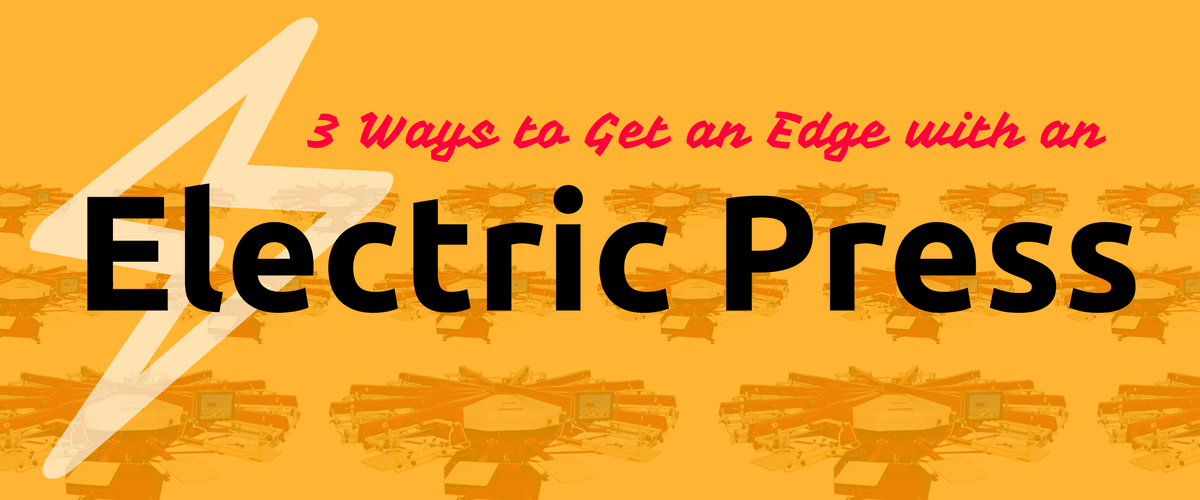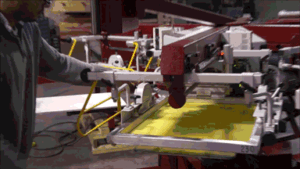

Revolucionando la industria de la serigrafía a través de tecnología de punta y servicio de calidad
Anatol Equipment Manufacturing Co.
1429 S Shields Dr
Waukegan, IL 60085


Revolucionando la industria de la serigrafía a través de tecnología de punta y servicio de calidad
Anatol Equipment Manufacturing Co.
1429 S Shields Dr
Waukegan, IL 60085

An automatic screen printing press has three major systems that can be powered in different ways.
The two most common ways of powering the systems on an automatic press are with air (pneumatics) or electricity. We’ll explore how air and electricity affect each system and figure out how reducing or eliminating your air use can help you print smarter, faster and better.
In order to move your shirts from one print head to the next, you’ll be relying on either pneumatic or servo electric motors. Electric motors have a distinct advantage here: there’s no way to control the acceleration/deceleration of a pneumatically-driven indexer. The only thing slowing down a pneumatic indexer is a hydraulic shock absorber, and the sudden stop creates vibration which can affect your registration and print quality over time.
A servo indexer gives you much better control over the carousel’s movement. Electric motors allow for smooth acceleration and deceleration, meaning no troublesome vibration or erratic movement. Besides being smoother, a servo indexer isn’t plagued with unsteady air pressure due to leaks or degradation, and there are never any air lines to replace. Choosing a press with a servo indexer will help keep your maintenance costs and downtime low and your print quality high.
No pneumatic worries here – the all-electric Anatol VOLT offers unmatched reliability and consistency
The second place on your screen printing press where electric power makes a big difference is the carousel lift. Pneumatic lift shares the same drawbacks as pneumatic indexing – there’s no way to control the speed of vertical movement between the pallets and screens, leading to vibration and lower print quality. Servo-driven lift eliminates variable air pressure and rough movement, making it easier for your press to maintain tight registration.
Electric power also improves another key aspect of carousel lift: off-contact. Off-contact is the vertical separation between the pallet and the screen, and printing on different types of substrates requires different off-contact settings. For example, printing on a thick garment like a sweatshirt requires greater off-contact than a regular t-shirt. The ability to make exact adjustments to this distance is key to getting the best print results. While a pneumatic press might require you to crawl under the machine and set the off-contact with a wrench, an electric screen printing machine with digital off-contact will let you adjust it right from the touchscreen – to a much greater range and a much finer degree, even as exact as a thousandth of an inch.
There are three motions in the print head that are powered by either air or electricity. The first is the vertical motion of the squeegee and flood bar – driven by levers called a chopper mechanism. Like any other pneumatically-powered system on your press, air-driven choppers are prone to uneven pressure which can reduce the quality of your printing, or worse, damage your screens. They’re also difficult to adjust. Electric choppers eliminate these concerns, letting you print safely and reliably.
Anatol’s Titan automatic press can reduce your air consumption with servo index and electric print head models.
The second powered motion in the print head is the horizontal stroke of the print carriage. Electric print carriages let you print with more consistency and make easier stroke adjustments than their pneumatic counterparts. Because you don’t have to rely on potentially unsteady air pressure building in a cylinder, you can print smoother and faster with an electric carriage than a pneumatic.
The third key system in the print head that may require power is the clamps holding the squeegee, flood bar and screen. Many presses use air for this, but over time the movement of the squeegee and flood bar can wear out the air lines. The tubing is also vulnerable to heat damage from flash cures. Mechanical clamps are a good alternative to pneumatics. Since they don’t need an air source, mechanical clamps don’t have tubing susceptible to wear and tear. They keep steady pressure without the risk of costly, time-consuming repairs.

Anatol’s mechanical Speed Clamps take the hassle of air out of the equation
When you’re searching for the perfect automatic press for your shop, electric-powered systems can give you a big advantage. No pesky air lines and cylinders will save you money and time, not to mention headaches. By choosing a press with as many electric systems as possible (even all-electric!), you’ll be able to print with greater reliability, accuracy and efficiency.
But these aren’t the only benefits of electricity! Want a better idea of how else you can save money and improve your printing experience with an electric press? Click here to download our white paper about the total cost of owning an all-electric machine compared to a pneumatic. It can pay for itself!
Your message was successfully sent!